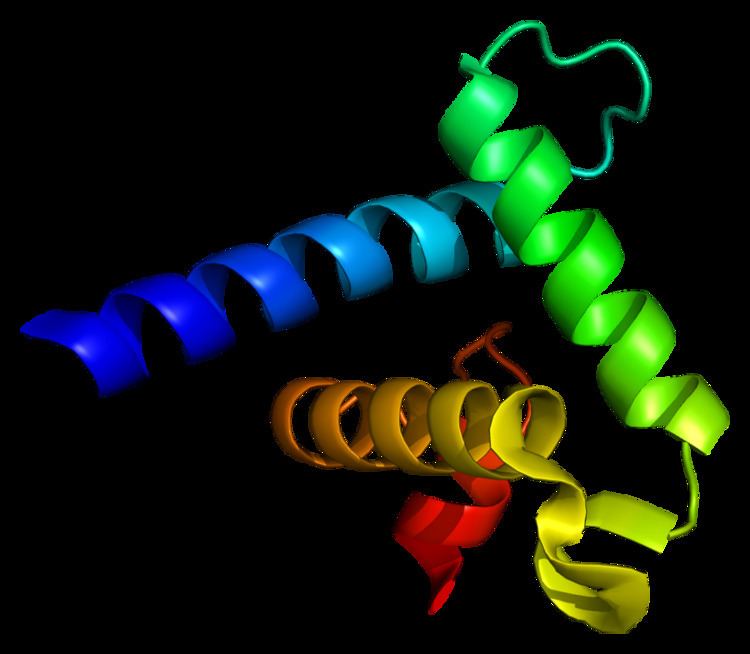Entrez 1387 | Ensembl ENSG00000005339 | |
 | ||
External IDs MGI: 1098280 HomoloGene: 68393 GeneCards: CREBBP | ||
CREB-binding protein, also known as CREBBP or CBP, is a protein that in humans is encoded by the CREBBP gene. The CREB protein carries out its function by activating transcription, where interaction with transcription factors is managed by one or more CREB domains: the nuclear receptor interaction domain (RID), the CREB and MYB interaction domain (KIX), the cysteine/histidine regions (TAZ1/CH1 and TAZ2/CH3) and the interferon response binding domain (IBiD). The CREB protein domains, KIX, TAZ1 and TAZ2, each bind tightly to a sequence spanning both transactivation domains 9aaTADs of transcription factor p53.
Contents
Function
This gene is ubiquitously expressed and is involved in the transcriptional coactivation of many different transcription factors. First isolated as a nuclear protein that binds to cAMP-response element-binding protein (CREB), this gene is now known to play critical roles in embryonic development, growth control, and homeostasis by coupling chromatin remodeling to transcription factor recognition. The protein encoded by this gene has intrinsic histone acetyltransferase activity and also acts as a scaffold to stabilize additional protein interactions with the transcription complex. This protein acetylates both histone and non-histone proteins. This protein shares regions of very high-sequence similarity with protein EP300 in its bromodomain, cysteine-histidine-rich regions, and histone acetyltransferase domain. Recent results suggest that novel CBP-mediated post-translational N-glycosylation activity alters the conformation of CBP-interacting proteins, leading to regulation of gene expression, cell growth and differentiation,
Posttranslational modification
Homeodomain interacting protein kinase 2 (HIPK2) phosphorylates several regions of CBP close to the N-terminal and close to the C-terminal region as well. Out of the described phosphoacceptor sites, serines 2361, 2363, 2371, 2376, and 2381 are responsible for the HIPK2-induced mobility shift of the CBP C-terminal activation domain that is also visible in poly-acrylamide gel electrophoresis (PAGE) experiments. However, activation of CBP by HIPK2 is not mediated by this phosphorylation but rather by counteracting the repressive action of the cell cycle regulatory domain 1 (CRD1) of CBP, located between amino acids 977 and 1076.
Clinical significance
Mutations in this gene cause Rubinstein-Taybi syndrome (RTS). Chromosomal translocations involving this gene have been associated with acute myeloid leukemia. Hypothalamic expression of this gene in mice correlates with mouse lifespan, and when CBP is inhibited in C. elegans by RNAi, there is a proportional fold-change decrease in lifespan.
Small molecule inhibition
A small molecule inhibitor (I-CBP112) binding to the bromodomain domain of CBP/p300 has been developed for leukaemia therapy.
Interactions
CREB-binding protein has been shown to interact with:
